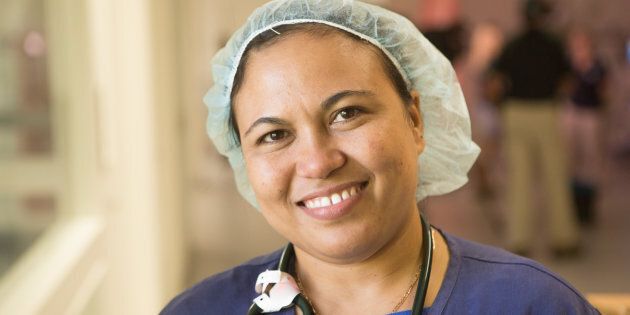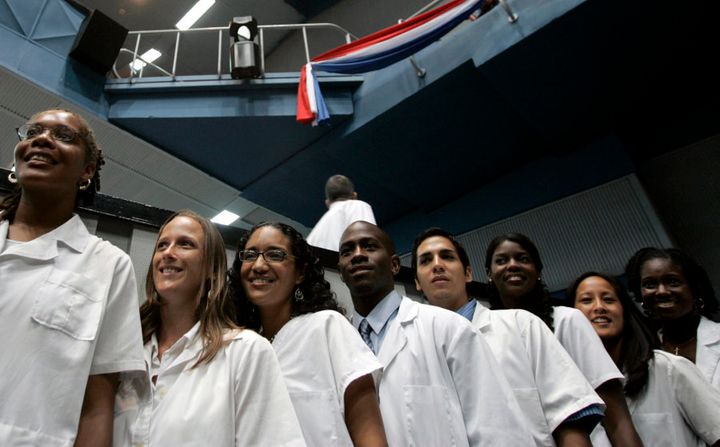
The humid heat of Fiji is quelled inside the surgical ward of Suva Colonial War Memorial hospital.
In the calm, air-conditioned rooms, Timorese registrar Mingota da Costa Herculano talks quietly to a doctor. She may not quite believe it, but she is an astounding example of where determination can take you.
She was born in East Timor -- the north-eastern part of a small, divided island near Indonesia with a history of occupation and violent conflict before it was declared a sovereign state in 2002.
To become one of the republic's first female anaesthetists she has not only had to learn three languages, she has learned high-level medicine in those three languages -- Indonesian, Spanish and now, English.
In a hospital break room in Fiji, she told The Huffington Post Australia, in near-fluent English, that she grew up in the city of Manatuto, where medicine wasn't always available.
"When I was child, I would get sick but we have few doctors. I decided then I'd like to become a doctor," da Costa Herculano said.

Yet it wasn't easy, there wasn't a medicine degree available so she spent two years studying civil engineering at university when she was offered a scholarship to study medicine in Cuba.
It's part of a long-term partnership whereby Cuban doctors work in Timor, and hundreds of students are sent to Cuba for training under the republic's applauded medical system.
When she arrived in 2003, she didn't speak Spanish.
"Actually it was very hard and but luckily we are 20 from Timor there, so we have each other," da Costa Herculano said.
"We must spend five years in Cuba without visiting our family."
By the time she came home in 2009, everything had changed. There had been marriages and births and deaths, but something changed for da Costa Herculano too.
"I met my husband," she said with a smile.
"He is also from Timor, doing the same specialty and our relationship started in Cuba."

They have a son, but when the opportunity came up for her and her husband to become an anaesthetists they knew he'd be in good hands with his grandparents.
They went to Fiji and learnt English for this final part of their studies with a team of doctors including Australian visiting med specialist in anaesthesia Dianne Stephens.
"It was sad to leave my son in Dili, although I know that he is in good hands with all the support that he needs. And I want to thank East Timor Government and Fiji University for this opportunity.
"And also I want to thanks Dr Eric Vreda and Dr. Flavio Brandao who's always support us."
In a few years, if all goes well, da Costa Herculano will graduate and return to Timor to provide a vital service for the republic's hospital system. She'll also be reunited with her son.
Looking back on her journey she said she knew it would all be worth it.
"It's hard for me as a mother and student who is far away from my beloved son, but I try my best to be there with him as soon as possible."